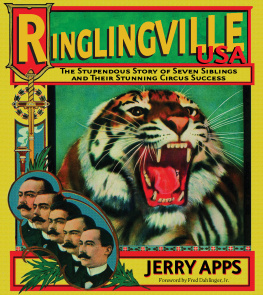When I am at the farm, I often follow my network of trails through the woods, across the prairie, along the flats and down the hills and around the many twists and turns. A trail is not for hurrying. Despite how familiar the trail is to me now, there is always something new to see or hear as I wind my way along. And there are the old friends: a deer bounding in front of me, the giant oak trees that I dearly love, the views across my ponds, where I often spot a mallard or a wood duck or a family of Canada geese. As the seasons change, the views from the trails change too, from the budding of the trees and the greening of the grass in spring to the rainbow of colors in fall to the naked maples in winter. Small side trails here and there lead to special views: a close-up look at the ponds; a trip to the prairie restoration. These trails provide access to a vast cross-section of central Wisconsin nature and landscapes, from upland forestland to wetlands to prairie. Traveling my farms nature trails is one of the great joys of life at Roshara.
Whispers and Shadows: A Naturalists Memoir
A companion to the
Wisconsin Public Television documentary
THE LAND WITH JERRY APPS
WHISPERS and SHADOWS
We can never have enough of nature.
HENRY DAVID THOREAU
WHISPERS and SHADOWS
A NATURALISTS MEMOIR

Jerry Apps
WISCONSIN HISTORICAL SOCIETY PRESS
Published by the Wisconsin Historical Society Press
Publishers since 1855
2015 by Jerold W. Apps
E-book edition 2015
Publication of this book was made possible in part by a grant from the D. C. Everest fellowship fund.
For permission to reuse material from Whispers and Shadows (ISBN 978-0-87020-709-9; e-book ISBN 978-0-87020-710-5), please access www.copyright.com or contact the Copyright Clearance Center, Inc. (CCC), 222 Rosewood Drive, Danvers, MA 01923, 978-750-8400. CCC is a not-for-profit organization that provides licenses and registration for a variety of users.
wisconsinhistory.org
Cover linoleum print 2015 by John Zimm
Design and cover illustration color by Nancy Warnecke, Moonlit Ink
19 18 17 16 15 1 2 3 4 5
Apps, Jerold W., 1934 author.
Whispers and shadows : a naturalists memoir / Jerry Apps.
1 online resource.
Description based on print version record and CIP data provided by publisher; resource not viewed.
ISBN 978-0-87020-710-5 (E-book) ISBN 978-0-87020-709-9 (hardcover : alk. paper) 1. Apps, Jerold W., 1934 2. NaturalistsWisconsinBiography. 3. Natural historyWisconsin. I. Title.
QH31. A64
508.092dc23
[B]
2014042058
To Steve and Natasha
Contents
Introduction |
The Home Place |
Walking |
Mas Garden |
Trees |
Wildflowers and Other Plants |
Animals |
Birds |
Changing Seasons |
Lifes Cycles |
Rain |
Wind |
Winding Trails |
Pond Magic |
Wood, Fire, and Smoke |
Being Neighborly |
Nature Writers and Conservationists |
Storytelling |
Family Camping |
Farther Afield |
Keeping a Nature Journal |
A Personal Nature Philosophy |
Always Learning |
Slowing Down and Disconnecting |
Listening to the Land |
Last Hunt |
Suggested Reading |
Introduction
Listen for the whispers and look in the shadows.
HERMAN APPS
My father loved nature. Wellhe never used the word love, but his actions revealed how he felt louder than if hed spoken the word.
As a farmer, Pa worked outside in the heat of summer and the frigid days of winter. He felt no affection toward mosquitoes and wasps, and he didnt care much for dry weather or for blizzards, but he enjoyed nature in all of its manifestations.
Pa taught me about those things that are easily seen, heard, and smelled: the fragrant evidence of a skunk passing nearby, a crow calling in the far distance, a giant oak standing sentry on a hill. But he also impressed upon me the importance of listening for the whispers and looking in the shadows, of seeking out those things not easily witnessed: the tiniest wildflower, the subtle sound of snowflakes alighting on pine needles, the distant growl of thunder, a spider web hanging underneath a tuft of prairie grass. He taught me to observe those things that are often overlooked. He showed me that in the shadows and whispers reside bits of information that allow one to know something more deeply and profoundly.
From the time of my very earliest memories, I was connected to nature. I was born during the middle of the Great Depression on a small farm in central Wisconsin. Our nearest neighbors were the Millers, a half mile to the south, and the Davises, more than a half mile to the north; like us, they were farmers. Crowding up to the north side of our farmhouse was a twenty-acre woodlot made up mostly of black oaks and white oaks and home to an abundance of wood violets, wild geraniums, shrubs, squirrels, rabbits, and ruffed grouse. Here and there where the sunlight managed to filter through were patches of blackberries that tore at your skin when you waded in to pick the lush, fat purple berries.
A dirt road trailed past our farm. Oaks and elms and aspen lined both sides of the road from where it connected with the north road (country roads had no fancy names in those days) to County Road A to the south.
Our farm included 160 acres of land, 140 of which were available for cultivation. These fields had been farmed since the 1850s, and since this was where the last great glacier stopped, the land was studded with stones. As rocks of various sizes, colors, and shapes surfaced each spring, we toted them to the edges of the fields and piled them under the wire fences as the previous owners had done. Among the stones grew stunted oak trees, hazel brush, wild cherries, black raspberries, wild grapes, and an assortment of other plants and shrubs, creating a tangle of vegetation and offering shelter to a great variety of songbirds and wild animals that fed on the berries, found a home in hollow fence posts (bluebirds, in particular), and sought sanctuary among the stones.
The sixty acres of cultivated land nearest the farmstead was a hodgepodge of fields large and small, a barbwire fence surrounding each one. A lane twenty feet or so wide led from the barnyard to the farthest field, and along it our small herd of cattle, fifteen or twenty of them, walked to and from the barn twice a day for milking. Like the fields, the lane was lined with stones and trees and shrubs.
Like other farm kids of my generation, I grew up immersed in nature. I quickly discovered that the woodlot, just a few dozen steps from the kitchen door, was a place of great mystery and excitement. When I wasnt doing farm work, I spent hours in that old woods, sometimes sitting and listening, sometimes walking and looking for something that I hadnt seen beforea squirrels nest, a hollow tree with a hole in it that had to be a raccoons den, a new wildflower emerging from the forest floor.
As I walked the lane to fetch the cows from the pasture, I listened to the birds, watched for wild animals, kept track of when the berries were ripeand helped myself to a few along the way. There were no roaring tractors to break the silence of a quiet, misty morning, no background traffic noise. For a farm kid alone with himself, it was a time for thinking and for enjoying the peaceful surroundings.
Next page
















